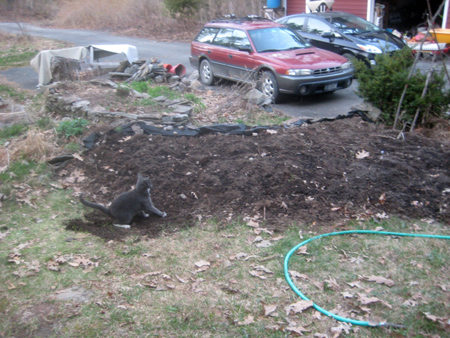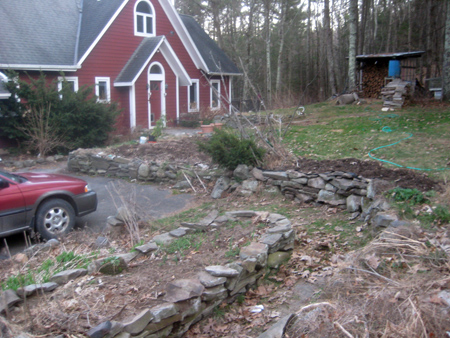|
|
|
perhaps better done with two threads
Saturday, April 18 2015
In recent days I've made further progress with my barometric weather vane (which I have also called a "wind-measuring barometric array" or "WMBA"). It now has all six barometers (four for the compass directions, one pointing downward to measure windspeed from any direction, and one to be contained within the apparatus without exposure to the wind, to measure the baseline barometric pressure), and they're all working reliably. So I've been working on the code that will make it all actually produce useful data. Perhaps mistakenly, I'd wanted the Atmega328 that gathers the barometric data to also gather temperatures from the various AmbientWeather temperature sensors transmitting data at 433 MHz. Since, in order to function, the barometric array has to be high on a roof, why not also include a receiver there to capture sensor data with one less wall for the signals to penetrate? The problem, though, was that the code for receiving the sensor data was based on a polling algorithm: that is, the code ran a fast loop constantly checking for a situation and then doing stuff when that situation came to pass. This meant there was no time anywhere for the barometric data to be read. I looked into having the Arduino check the temperature sensors using an interrupt-based algorithm, and even implemented the code and modest hardware changes needed to make this happen, but from all indications, the tiny 433 MHz receiver board (which only has one data pin) produced a constant stream of pulses even when no good data was coming in, meaning interrupts would never work. Obviously, then, the way to do this is to dedicate an AVR chip to temperature sensor data reception (they're certainly cheap enough and I could probably use an ATtiny85 with only eight pins) and not overload one with a job that should be handled by two using separate processing threads. In the meantime, though, I have a compromise solution using just one Atmega328 to do both jobs. Instead of executing a useless delay after transmitting the barometric measurements down the serial line, the Atmega328 uses that time to poll for temperature sensor data. While it's true it could miss an incoming temperature reading while it's dealing with barometric data, temperatures change slowly and an occasional missed reading is no big deal.
My temporary crown wasn't bothering me today, though I nevertheless felt a non-specific malaise that may have been partly the result of the 25 mg of diphenhydramine I took to get to sleep last night. Nevertheless, I was motivated enough to clear the cellulosic rubbish (stakes, poles, and old kale stalks) from the main garden patch and till it using a tilling fork. There was a fair amount of cardboard on the surface (mostly flattened beer cartons) that I'd used as mulch, and I just tilled it under. The soil was much richer in earthworms than any soil I've ever encountered, indicating that I probably don't have to take any special measures to fertilize it this year (though I will continue burying urine-soaked pine needles and dog shit in it).
Of late, the only food I've been craving has been tacos. I like the stand & stuff hard-shell corn kind, and I like to put fresh greens or shredded cabbage on top of the beany glurp that provides the protein component. I had that for lupper tonight while Gretchen was off near Delhi participating in the commemoration of Edna St. Vincent Millay, her favorite poet.
Not wanting to be just another wasteful American, I usually don't bathe more than twice a week, but since the solar hydronic system maxed out on hot water collection today (this happens when the water in the tank reaches 160 degrees Fahrenheit), I took my second bath in three days tonight. It had a real therapeutic purpose: I'd developed a rash of microblisters on my left thumb and ring finger from Poison Ivy roots present in the soil I've been mining from the banks of the Esopus.

Celeste playing in the dirt of the new cabbage patch this evening. (Click to enlarge.)

To the left (east) of the bush in the dead-center of this photo is the "main garden patch" and to the right (west) is the "cabbage patch" behind its brand new retaining wall of bluestone. The ovoid patch in the lower left is the garlic patch. Note the woodshed in the background, still filled to the rafters with that last tranche of firewood.
(Click to enlarge.)
For linking purposes this article's URL is:
http://asecular.com/blog.php?150418 feedback
previous | next |

